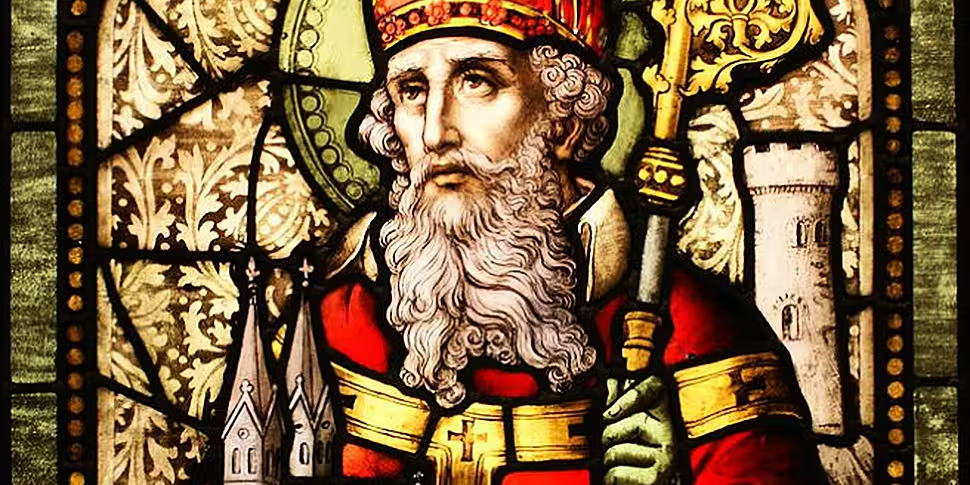At some point in the 5th century Irish pirates abducted a sixteen-year-old boy from Britain and irrevocably changed the history of Ireland forever. For six years Patrick tended his master’s flock of sheep and developed his relationship with god. After escaping his captors Patrick returned to Ireland, determined to bring Christianity to the island.
Through a combination of miracles, hard work, horticulture, and herpetology Patrick helped to convert large swathes of Ireland. Today he is revered as the foremost of Ireland’s three patron saints, a supposed chief among equals with Brigit and Columba. His seat at Armagh remains the heart of Catholic Ireland while his illustrative shamrock has become a symbol of the nation.
This Tuesday people around the world, whether Irish for life or just March 17th, will celebrate Saint Patrick and the Irish identity he helped form. On Sunday ‘Talking History’ will be talking a look back at some of the show's best discussions of the past year. At 7pm Patrick will start the show with a look back at our discussion on the Armenian genocide.
 Armenians are marched to a nearby prison in Mezireh by armed Turkish soldiers. Kharpert, Armenia, Ottoman Empire, April, 1915
Armenians are marched to a nearby prison in Mezireh by armed Turkish soldiers. Kharpert, Armenia, Ottoman Empire, April, 1915
In 1915 the Ottoman Empire began a policy of forced migration and displacement of its Armenian population. This effort at neutralising any internal threat posed by the Armenian population also saw wholesale massacring of the able male population. These executions and the forced migration through the inhospitable Syrian Desert resulted in between 1 and 1.5 million Armenian deaths.
Starting in 1915 and lasting until after peace was signed the Armenian Genocide, along with the Greek and Assyrian Genocides, stands out as one of the worst atrocities of the First World War. This massive loss of life continues to cause controversy today. This is mainly due to the fact that no Turkish government has been willing to accept the label of genocide.
Though there are movements afoot in Turkey to change this stance the politically popular view remains that the loss of life does not constitute genocide. For many people this continuing lack of recognition has impeded attempts at remembrance and reconciliation. 100 years after the events first began the world is still being affected by the loss of Armenian life.
Earlier this year Patrick talked with a panel of experts about the Armenian genocide and the impact that it has had on history. Join us at 7pm as we look back on this discussion. What exactly happened? Why were the Armenians targeted? And why is the title of genocide so hotly debated?
 Berliners watching a C-54 land at Berlin Tempelhof Airport, 1948
Berliners watching a C-54 land at Berlin Tempelhof Airport, 1948
At 8pm we turn to Germany under the Iron Curtain as Patrick looks back on the history of the Berlin Blockade.
As the dust of the Second World War settled Germany found itself carved up between the Soviet Union and the Western Allies. As peace prospered Germany became two distinct nations; in the West Allied occupation gave way to democracy while the East was absorbed into the USSR. Though these spheres of influence almost perfectly bisected Germany the West were able to retain a small enclave of power in the East in the form of West Berlin.
This small island of Western control would play a massive role in the ideological battle during the Cold War, acting as a beacon and promise for those opposed to Soviet control. Yet in 1948 the future of West Berlin was far from certain or secure.
After Nazi defeat Berlin, like Germany, had been carved into four areas of influence: France, Britain, Russia, and the US. The areas under Western control were dependent on goods shipped by rail, road, or canal from their patron nations. When France, Britain, and the US moved to create a new German nation out of their collective pieces the Soviet Union looked to West Berlin as a hostage against such a move.
In April 1948, in reaction to the introduction of the new Deutschce Mark, the Soviet Union stopped all transportation between Berlin and the West. With only the skies left open the Western powers began the herculean task of supplying West Berlin via air drops. For more than a year the air forces of Britain, America, Canada, New Zealand, Australia, and South Africa flew fuel, food, and other necessities to the people of Berlin; finally forcing the Soviet Union to call an end to the blockade on May 12th, 1949.
This Sunday at 8pm Patrick looks back at our discussion on the Berlin Blockade. Join us as we revisit what life was like during this tumultuous time. How did it all start? Why did it end? Was it expected to work? And what was the ultimate outcome of the Berlin Blockade?









